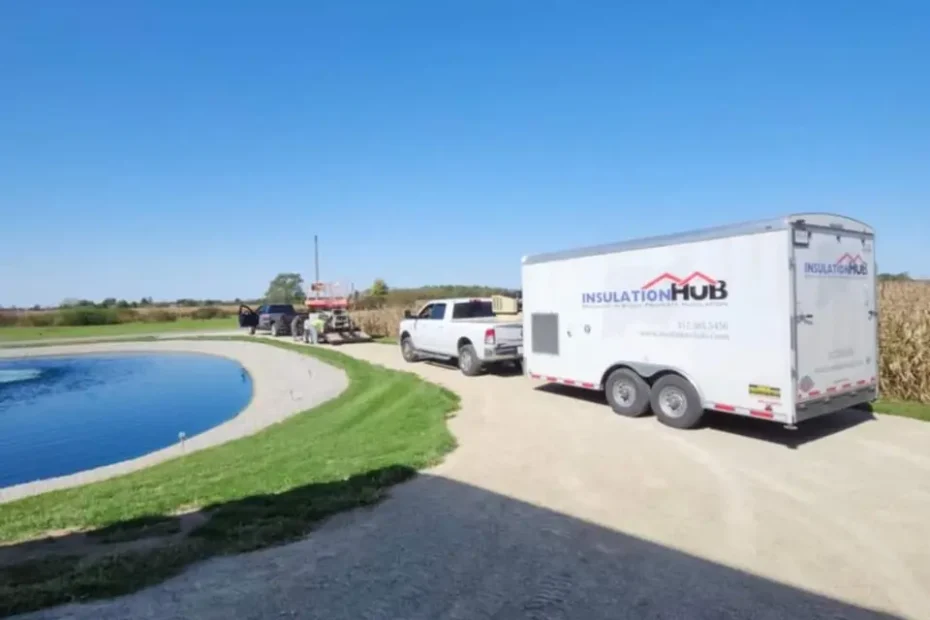Are you tired of high energy bills and uncomfortable temperatures in your home? Blower door testing might be the solution you need! This innovative method not only identifies unseen air leaks but also helps maximize your energy savings. In this article, we’ll explore what blower door testing is, how it works, and why it’s essential for every homeowner looking to make their space more energy-efficient.
What is Blower Door Testing?
Blower door testing is a diagnostic procedure that measures a home’s air leakage. It involves the use of a specialized fan and equipment to create a controlled pressure difference, allowing you to identify where air is infiltrating or escaping your home.
The concept is simple yet powerful. By systematically identifying these leaks, homeowners can make informed decisions about improvements and repairs. This not only enhances comfort but also leads to more efficient energy use.
Through this process, you’ll gain comprehensive insight into how air flows in and out of your home, which is especially valuable in older houses where drafts and gaps are common. Understanding air movement is the first step toward a more comfortable and energy-efficient living space.
In essence, blower door testing acts as a detective tool in the quest for energy efficiency. It’s about uncovering the hidden inefficiencies that often go unnoticed. Once identified, these leaks can be sealed effectively to reduce your overall energy consumption.
How Does the Testing Process Work?
The testing process is straightforward. A blower door is installed in an exterior door frame, and the fan is activated to depressurize the house. Once the pressure drops, the team can identify leaks with the help of smoke pencils or infrared cameras.
Now, some may wonder how the fan works. Essentially, it pulls air out of the home, creating a lower pressure inside than outside. This differential pressure forces outside air through any gaps, making leaks easier to detect. You might even see drafts or experience slight breezes in places you least expect!
During the test, trained professionals will monitor the home’s response closely. They can pinpoint exact locations of air leaks, and you may be surprised by how many locations are found. It’s not an invasive procedure, yet it provides substantial results that pay off in the long run.
The Benefits of Blower Door Testing
Understanding the benefits of blower door testing is crucial. Not only does it help in pinpointing leaks, but it also leads to energy savings, improved comfort, and a smaller carbon footprint.
By investing in this testing, you are investing in both your home and the environment. Every leak found is an opportunity to save money on heating and cooling costs. The cumulative effect can be quite significant, especially in larger households.
Moreover, a well-tested and sealed home helps maintain a consistent temperature, reducing the burden on your HVAC system. This not only extends the lifespan of the equipment but also enhances overall air quality, as less dust and allergens enter the home.
Common Places to Find Air Leaks
Air leaks can occur in many places around your home. Common culprits include gaps around windows and doors, attic hatches, and even electrical outlets. Knowing where to look helps you address the issue more efficiently.
Interestingly, you might find leaks in unexpected places such as baseboards and wall outlets. These are often overlooked but can significantly contribute to energy loss. A thorough inspection can reveal these hidden spots that require attention.
Sealing leaks in these areas can greatly improve the energy efficiency of your home. It’s often a simple DIY task that homeowners can take on after blower door testing provides the necessary guidance.
Steps to Take After the Test
Once the blower door test is complete, you’ll receive a detailed report. The next step is to seal the identified leaks using caulking, weatherstripping, or better insulation to maximize energy savings and improve comfort.
It’s essential to prioritize the areas with the most significant air loss first, as these are the spots that will yield the most substantial savings. Investing a little time and effort can lead to a significant impact on your energy bills.
Additionally, consider scheduling routine tests every few years. This proactive approach will ensure that your home remains energy-efficient over time, adapting to natural wear and tear and environmental changes.

